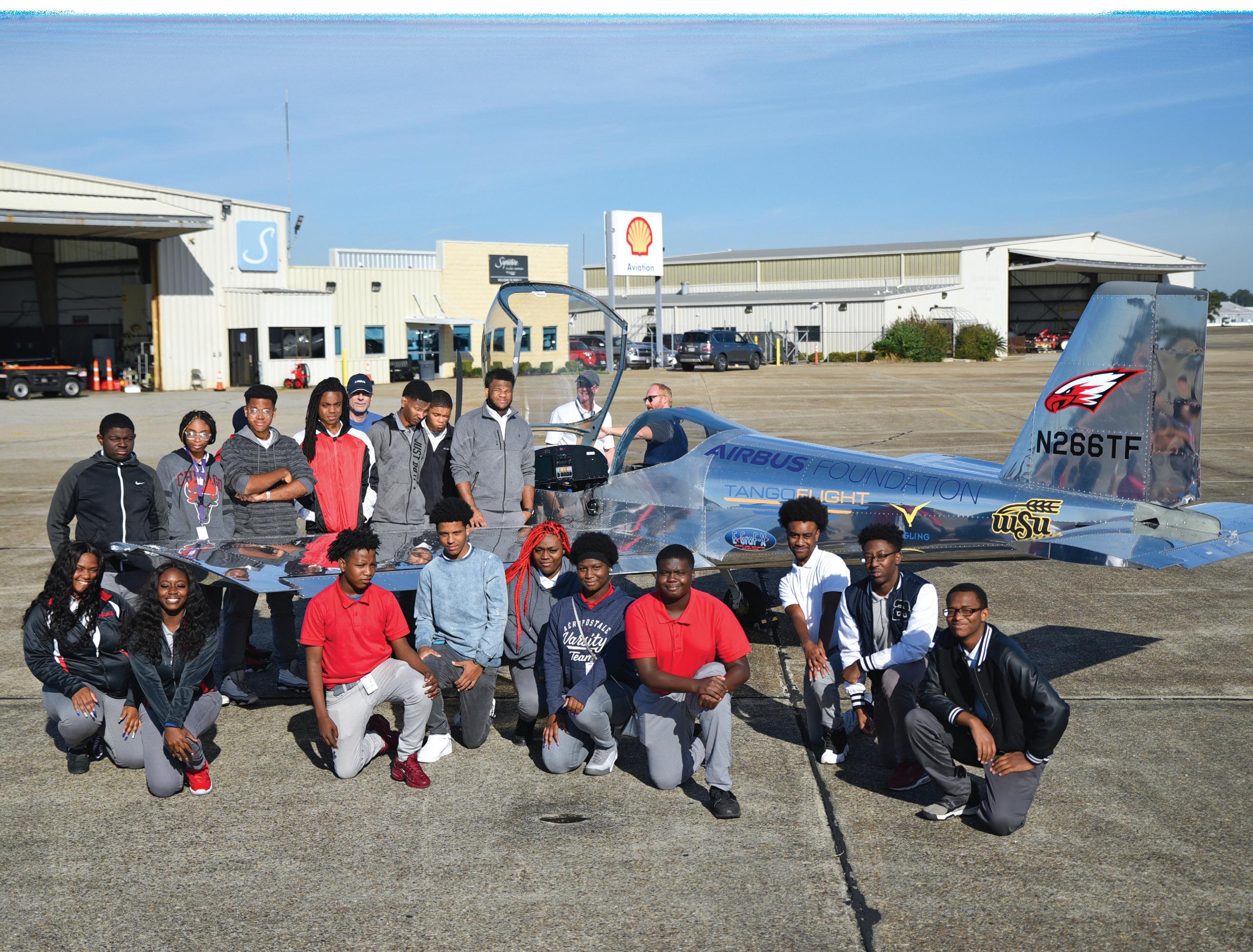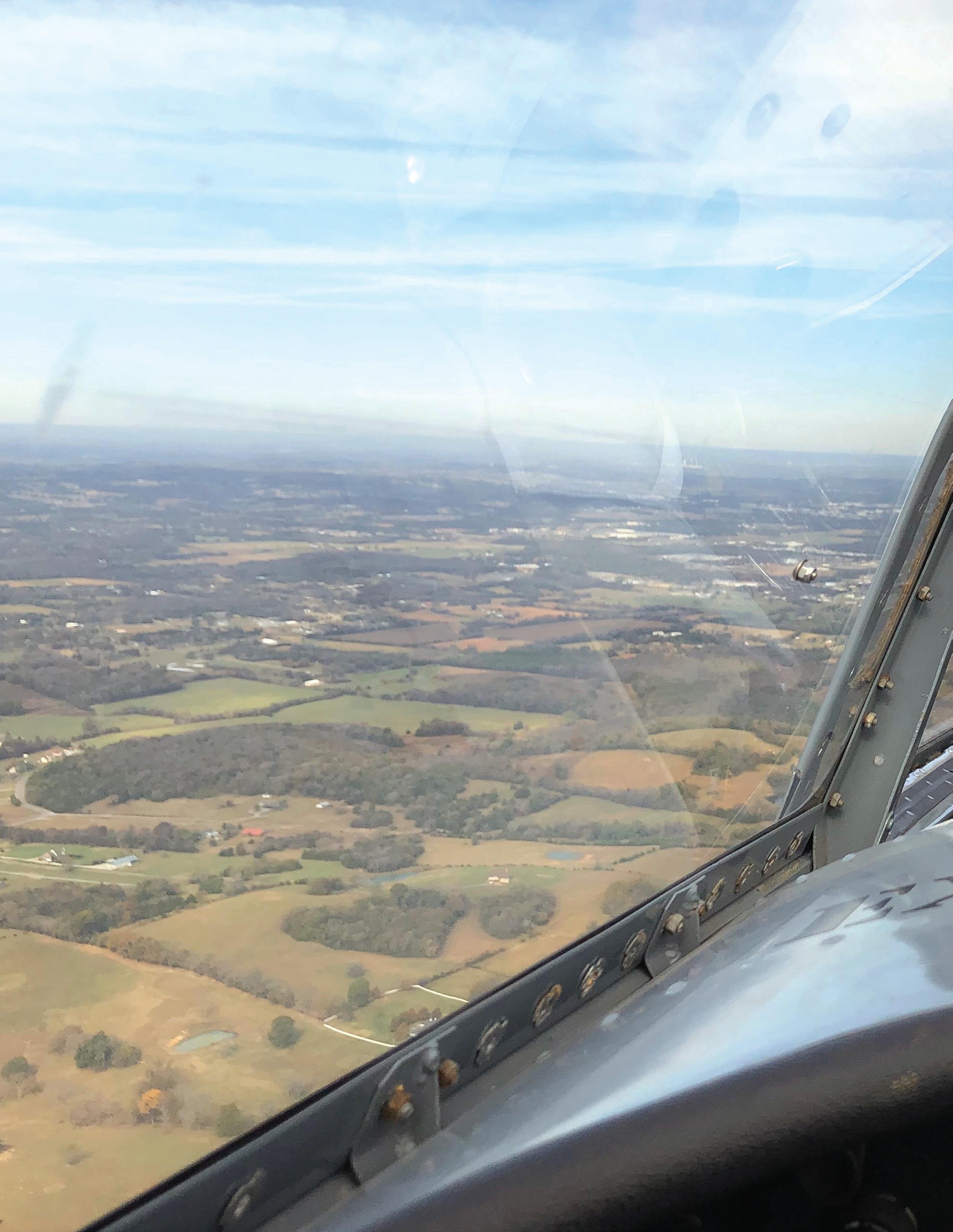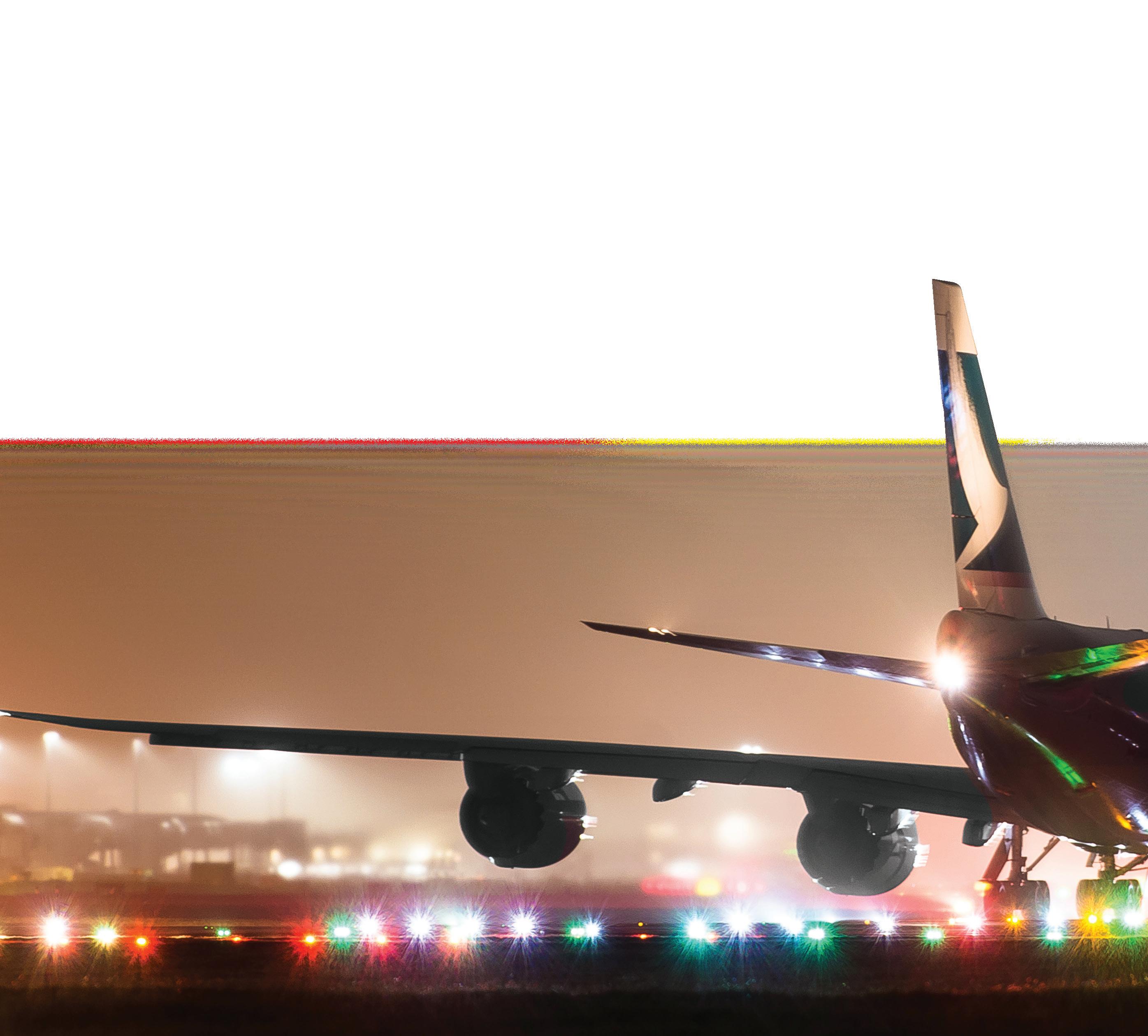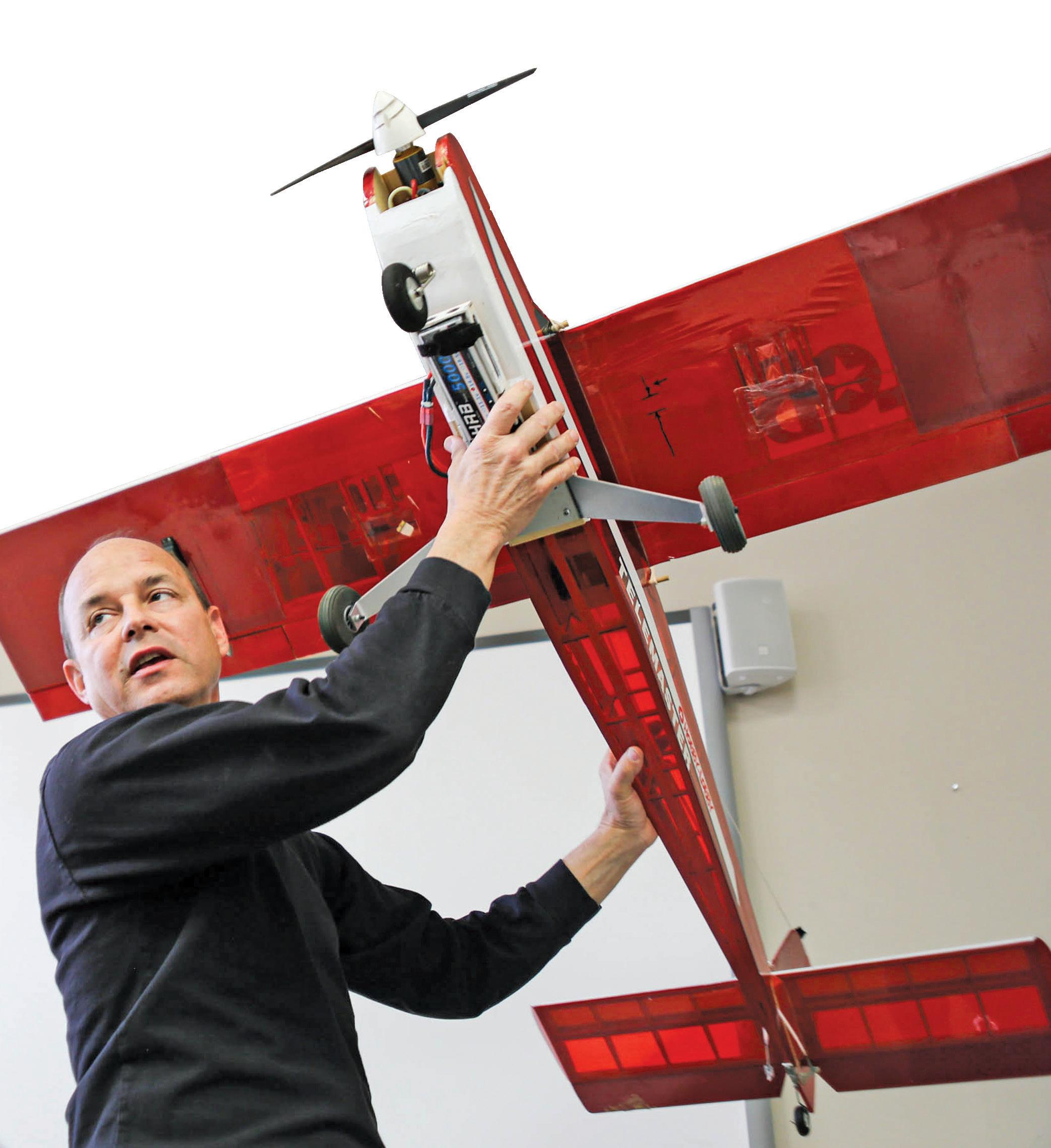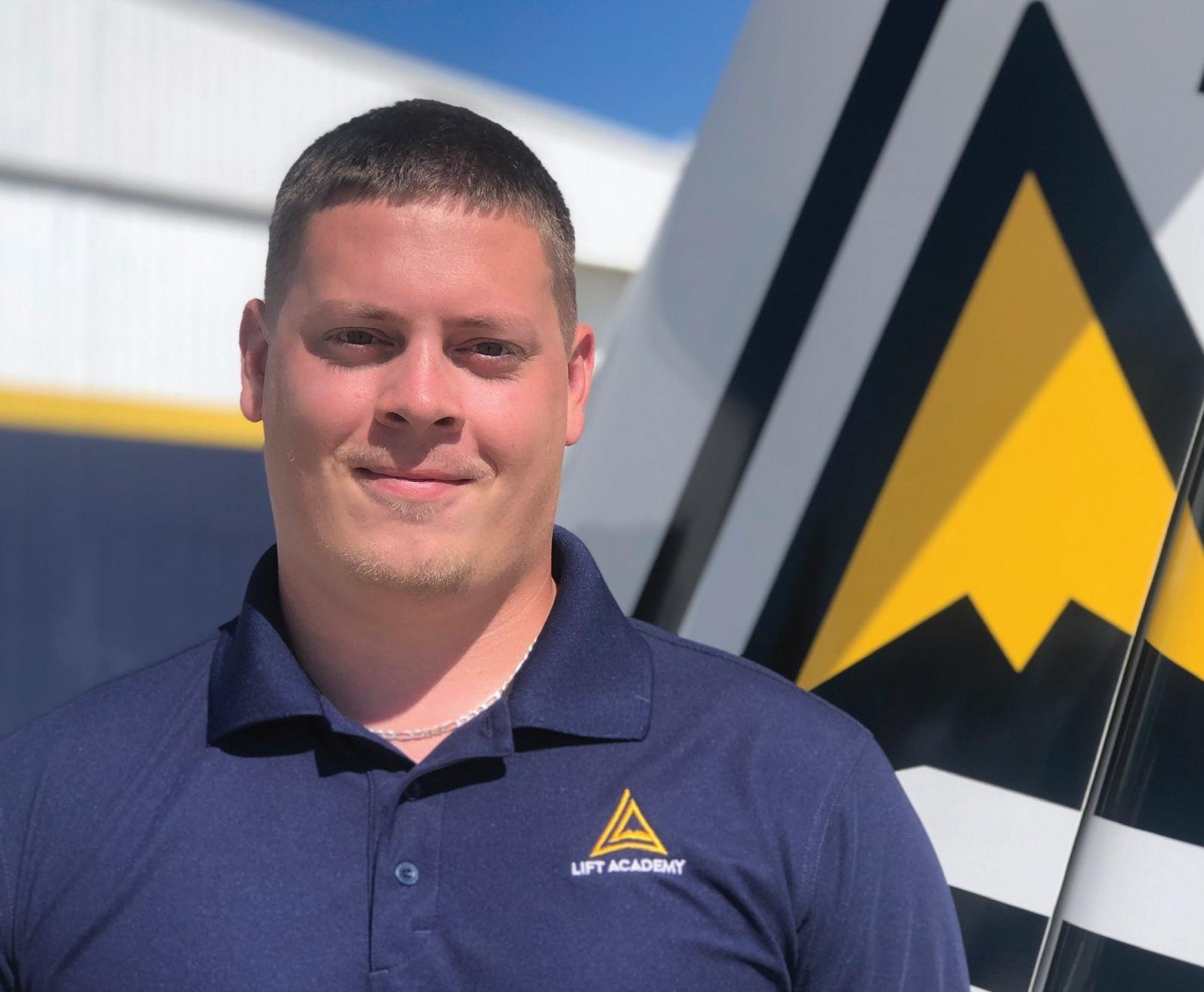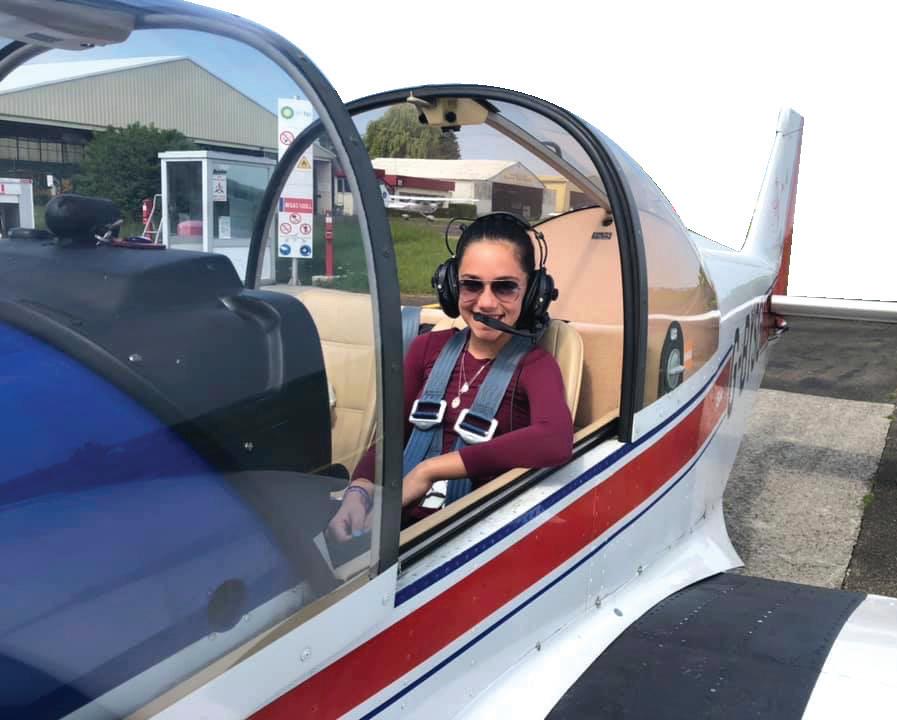Night Sky BY MATT FERRARI I get to see a lot of the world in my “day” job. Oddly enough, most of the places look the same after a while. I see two rows of blue lights and if I keep the plane in the blackness between them they will lead me to two rows of white lights. I know that if I keep the plane in the blackness between the two rows of white lights and if I add enough power and gain enough speed that eventually I’ll feel the last clunk of the runway being left behind as we climb into the blackness. I do a lot of night flying…. On this night the winds were out of the north at 12 knots with 3 miles visibility in light drizzle and mist. The first layer of clouds was at 300 feet with a broken layer at 500 feet and overcast at 1,100 feet. On takeoff, it was just an instant of watching the last of the white lights fall away from the nose when I transitioned inside and onto the gages, or more accurately, eyes onto the “glass”. In about as much time as it took for you to read those words we had slipped into the inky murk of the low hanging clouds. Other than the thump of the landing gear retracting into the wheel wells and the slight rumble felt with the retracting of the flaps, there was almost no sense of motion. The numbers on my altitude tape continued to get bigger, so that was good, the heading bug was where it was supposed to be, the attitude indicator showed blue on top and brown on the bottom, and the airspeed numbers got bigger and then settled where they belonged at our climb speed. All was right with the world because the instruments say it’s so, at least in my little world anyway. Once all was confirmed to be behaving properly, I peeked over the instrument panel and was greeted with two greyish white javelins from our landing lights spearing into the layers of broken clouds. I knew that if
28 www.avinationusa.com
we kept climbing eventually I’d see the stars. And then like a fish jumping out of the lake, we popped out. The difference, though, is that the fish falls back down to the water, I fall up into the night sky! We’re leaving New York’s JFK airport headed to Europe, to the old Hahn Air Base just outside of Frankfurt, Germany. Tonight’s flight will be taking us 3,359 nautical miles across mostly water and is planned for six hours and twenty three minutes, takeoff to touchdown. Looking at the flight plan I convert the fuel burn that is listed in kilos, first to pounds and then to gallons. It’s my own check as to the madness in the world when I then convert the gallons figure into how much flying I could do in my Piper Cherokee back home. We’ll burn just over 22,500 gallons of jet fuel tonight, converting that to avgas, that’s enough to fly well over two thousand hours in the Cherokee, even if I push it hard, and if I still had the Champ…… well, that’s an awful lot of flying! Taxiing a Boeing 747 at a big, busy airport is probably the greatest challenge of the night. There’s a lot of airplanes moving around, rapid fire instructions from the controllers and many different taxiways with a lot of intersections that allow for plenty of opportunities to mess up. Eventually, we find our way and join the conga line, patiently inching ahead for our turn to takeoff. Finally, we depart runway 31L with an immediate left turn toward the Canarsie VOR. We’re handed off to departure control and crossing Canarsie, we turn left again and head outbound on the 176 degree

